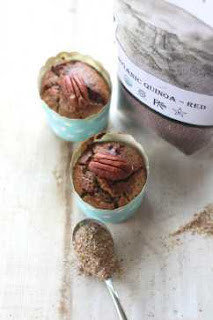Olive oil has a reputation for being one of
the healthiest oils to eat and cook with, but recently coconut oil is gaining
the same support within the health community. With each having their own
benefits in the kitchen, below is a guide on deciding which oil is best for
your healthy cooking needs.
Olive oil has more “good fat",
monounsaturated and polyunsaturated fats, than virgin coconut oil. For example, 1 tablespoon of olive oil contains 11 grams (gm) of
monounsaturated fat and 1 gm of polyunsaturated fat, as compared to a
tablespoon of coconut oil which contains 0.1 gm of monounsaturated fat and 0.25
gm of polyunsaturated fat. Olive oil has less saturated fat than coconut
oil. Saturated fat, particularly from animal products, can increase
our bad cholesterol (LDL) and increase risk of developing atherosclerotic
plaques and coronary artery disease.
For example, 1 tablespoon of olive oil
contains 1 gm of saturated fat where as 1 tablespoon of coconut oil contains 13
gm of saturated fat. In a quick analysis, coconut oil contains more than 10
times the amount of potential bad fat compared to olive oil. This analysis is
not quite as simple as the other. Saturated fats from some plant-based products
are not as bad as those from animal-based products. Most of the saturated fats
in coconut oil come from lauric acid, which can increase bad cholesterol (LDL)
but also good cholesterol (HDL). Because it increases both good and bad
cholesterol, the risk of using coconut oil may not be as significant, or even
significant at all.
With any efficient food source, the
amount of calories per serving becomes important. Even healthy foods consumed in excess can become unhealthy. When it
comes to calories, both olive oil and coconut oil are similar. One tablespoon
of olive oil contains 120 calories, compared to 130 calories in a tablespoon of
coconut oil.
And the Winner Is . . .
Right now, olive oil is the best choice for
a healthy heart (‘heart healthy’ just doesn’t
mean it’s a cure for heart disease. It simply means it is a healthier choice
than some of your other choices) because: -
More
research supports the long-term benefits of olive oil for the human body. This is not a true knock on coconut oil. The same may be true of
coconut oil, but we just have to wait for the human data to come in to guide
us.
The quantity of polyunsaturated and
monounsaturated fats is clearly higher in olive oil.
These good fats have many heart-healthy properties, including lowering
inflammation, improving cholesterol and lowering risk of heart disease. Of
course , if you are a coconut oil enthusiast, there is a lot to be optimistic
about. Coconut oil has quite a few potential heart-health benefits, and there
have been remarkable findings in people who consume a lot of coconut.
Olive oil is high in monosaturated fat
which benefits heart health whereas coconut oil is high in saturated fats which
harm heart health. A few small studies show that the saturated fat in coconut
oil is less harmful than other saturated fats.
The smoking point of olive oil corresponds
to 137 degrees centigrade, which is relatively low and implies that olive oil
should not be heated to high temperatures. The smoking point of coconut oil is 176
degrees centigrade, making it more appropriate for cooking at moderate
temperatures. Cooking above the smoking point of oil is not recommended and can
lead to the formation of compounds that could be harmful for your health. Olive
oil is usually liquid at room temperature but becomes solid in the
refrigerator, while coconut oil is hard when kept in the refrigerator and can
be either solid or liquid at room temperatures because of its melting point of 24
degrees centigrade.
What about all the claims that coconut oil
can cure obesity, cancer, and thyroid disease, lower your cholesterol, and boost your immune system? That's
just it, these amazing health benefits are just claims. Presently, there have
been no large studies to support the benefits associated with using coconut oil
in meals. Until more evidence comes out, you may want to wait before cooking
everything with coconut oil (but because of its higher smoke point, it might
work well in certain instances). When possible, choose a bottle of
heart-healthy olive oil.






